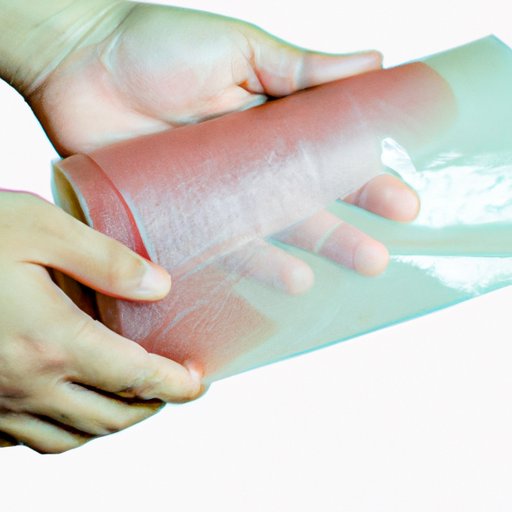
Introduction
Gas pains can be a frequent and uncomfortable experience for many individuals. The discomfort can make going about daily life challenging, and can negatively impact overall physical and emotional well-being. This article aims to provide information on various natural remedies, eating habits adjustments, exercise tips, over-the-counter medicines, hot compress options, yoga poses, and advice to seek professional help in order to alleviate gas pains and improve quality of life.
Natural Remedies
Natural remedies refer to non-pharmaceutical, plant-based options for relieving gas pains. These remedies often have a long history of use and can be quite effective in managing symptoms.
Peppermint tea can help by relaxing the gastrointestinal muscles and promoting digestive enzymes. Ginger, known for its anti-inflammatory effects, can also help in easing gas pains. Fennel seeds, with their anti-spasmodic and carminative properties, can aid in loosening gas and easing digestive muscles. Probiotics are dietary supplements that can promote a healthy gut microbiome and reduce inflammation, improving overall digestion and reducing gas pain. When taking natural remedies, it is important to carefully follow dosage instructions, consider combining remedies under the guidance of healthcare professionals, and be aware of possible side effects.
Adjusting Eating Habits
Eating habits can play a significant role in gas production and the onset of gas pains. Adjusting eating habits to be more conducive to digestion can significantly alleviate gas pains.
Consuming smaller, more regular meals can help reduce gas production and promote easier digestion. Drinking water instead of carbonated beverages can reduce gas build-up in the stomach. Chewing food well can improve digestion by allowing for smaller pieces and a better breakdown of food. Tips for adjusting eating habits may include meal planning, record keeping, and dietary restrictions under the guidance of healthcare professionals.
Exercise
Exercise can help regulate digestive processes and reduce instances of gas pain. Incorporating exercise into a daily routine, even in small amounts, can have a positive impact on digestion and overall health.
Yoga, walking, and aerobics are all great options for exercises that can help relieve gas pains. Yoga is especially beneficial, as certain poses, such as the “Wind-relieving pose” (Pavanamuktasana), can specifically address gas pain and improve digestion. When beginning an exercise routine, it is important to start slow and gradually increase, choose a style of exercise that fits individual preferences and needs, and set regular times for exercise.
Over-the-Counter Medicines
Over-the-counter medicines can be an effective and accessible option for managing gas pains. These medications work by breaking up gas bubbles or aiding in digestive enzyme production.
Simethicone, activated charcoal, and lactase supplements are all different types of medications that can be used to relieve gas pains. Care should be taken to follow proper dosage instructions, time-taking of medication, and the risk of combining different types of medicine.
Hot Compress
Hot compress, such as a heating pad or hot water bottle, can help relax muscles and ease gas pain. Heat can help break up gas bubbles and promote overall relaxation and comfort.
To use a hot compress for gas pains, care should be taken to place the compress in the appropriate area, for a safe duration of heating time, and at a suitable temperature. Alternatives to hot compresses include warm baths, showers, and massages.
Yoga
Yoga is a great option for helping alleviate gas pains. Certain poses, such as the “Wind-relieving pose” (Pavanamuktasana), can specifically target digestion and relieve gas pain.
Other poses that can aid in gas pain include downward dog and child’s pose. Proper technique, avoiding injury, and starting slowly are important aspects of practicing yoga safely and effectively.
Seek Professional Help
Persistent gas pain warrants professional help, ideally from a doctor or registered dietitian. These professionals can provide medication, dietary recommendations, and testing to identify and manage underlying causes of gas pain.
Preparation, communication, and choosing the suitable care options are important in seeking professional help for gas pain, and the sooner individuals seek help, the sooner relief can be experienced.
Conclusion
Gas pains can be uncomfortable and disruptive, but there are many options available to alleviate and manage symptoms. From natural remedies, eating habits adjustments, and exercise tips, to over-the-counter medicines, hot compress options, and yoga poses, this article outlines various solutions available for individuals. If gas pains persist or seem severe, individuals should seek professional help from healthcare professionals.





